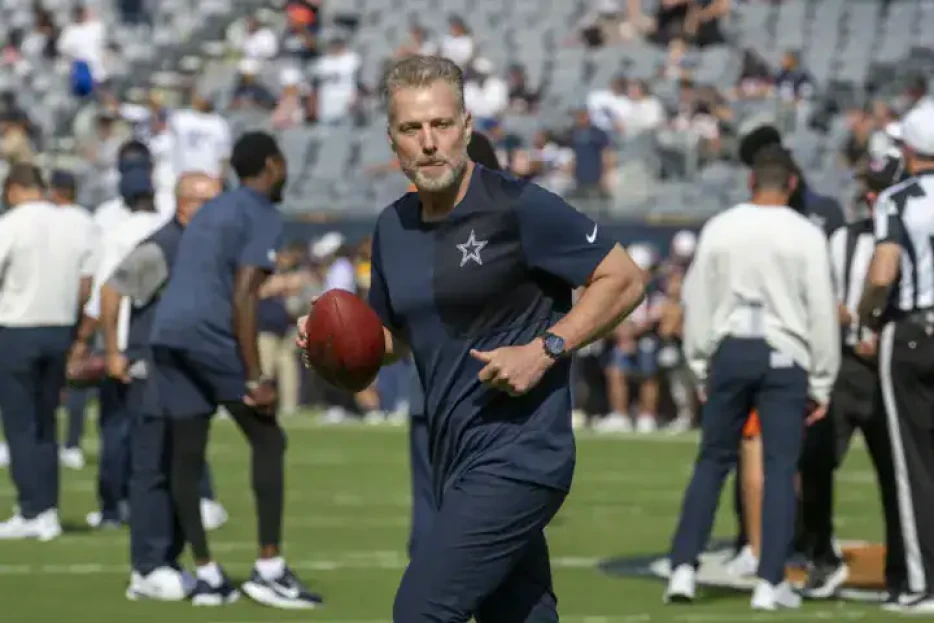
 Inside The Star
Inside The Star
PFF grades and coverage data reveal four fixes—personnel and scheme—that can rescue Matt Eberflus’ struggling Dallas Cowboys defense right now.
For six weeks, the Dallas Cowboys’ defense has become a case study in underachievement.
Despite boasting one of the most talented rosters in football, Dallas ranks near the bottom of the league in EPA per dropback allowed (+0.32). On paper, this unit has playmakers at every level. On film and in data, it’s a defense fighting against itself.
This isn’t a talent problem — it’s an identity problem. Matt Eberflus’ defensive structure has grown predictable, leaning on static zone shells that invite easy completions and neutralize the aggression that once defined Dallas.
The Cowboys have the personnel to dictate matchups, yet they’re being dictated to — and the analytics prove it.
Dallas’ efficiency data paints a troubling picture. The Cowboys run Cover 2 on 29 percent and Cover 3 on 35 percent of snaps.
Nearly two-thirds of their plays rely on conservative zone looks designed to prevent explosives — but instead, it’s producing a slow bleed of short gains.
Linebackers Kenneth Murray Jr. and Marist Liufau have been exposed in coverage, posting PFF defensive grades of 39.3 and 41.1.
Both are built to attack downhill, not carry routes through deep zones. Offenses exploit that mismatch with play-action and quick seams, leading to one of the league’s highest completion rates against linebackers.
It’s schematic rigidity, not a lack of effort, that’s sinking this defense.
The secondary tells the same story. The Cowboys’ cornerbacks are built for man coverage, yet they’re trapped in zone assignments.
Trevon Diggs, one of the NFL’s premier ballhawks, owns a 62.5 coverage grade, but rarely gets to press receivers.
Kaiir Elam carries a 55.5 coverage grade with a 74.1 run-defense score, while DaRon Bland sits at 61.9, yet spends most snaps spot-dropping into space.
As Mark Bullock’s defensive analysis showed last year, Dallas corners thrive when allowed to challenge receivers and disrupt timing.
Under Eberflus, they’re reacting instead of attacking — and when press corners become space-spotters, their greatest weapon — aggression — vanishes.
Ironically, the front four is doing its job. James Houston carries an 80.1 pass-rush grade, ranking among the NFL’s top 30 edge defenders.
Rookie Donovan Ezeiruaku owns a 72.0 overall grade and a 93.7 coverage mark, proving he’s a versatile modern hybrid.
Veteran Dante Fowler Jr. continues to produce with a 74.8 grade, and Osa Odighizuwa anchors the interior at 69.4.
Yet, quarterbacks facing Dallas release the ball in just 2.4 seconds, the fastest in football per Next Gen Stats.
That’s not a failure of the rush — it’s a failure of coverage. The Cowboys’ soft zones invite quick throws that neutralize their line before pressure can arrive.
Eberflus’ defense “trades chaos for control,” and that control is strangling...